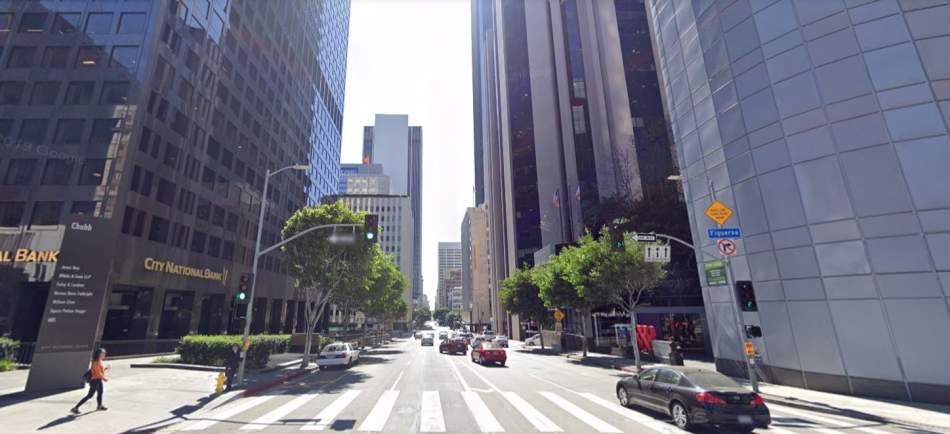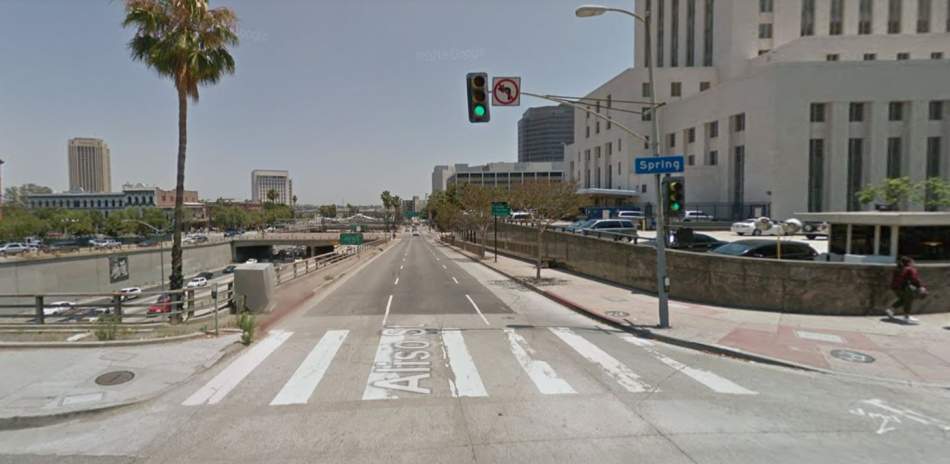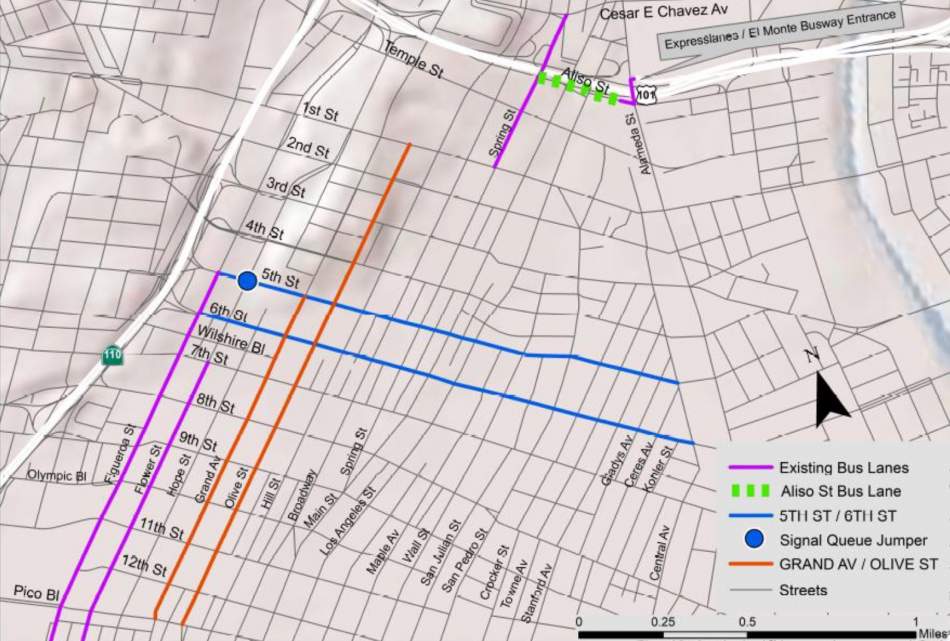Nearly one year ago, Metro and the Los Angeles officials launched a bus-only lane on Flower Street to coincide with a temporary shutdown of service on the A and E Lines. Now, citing the success of that pilot program, additional bus-only lanes could be coming to two of Downtown's key east-west arteries.
A working group assembled in support of the NextGen bus plan has recommended that Metro and the Los Angeles Department of Transportation should install a westbound bus-only lane on 5th Street and an eastbound bus-only lane on 6th Street between Figueroa Street and Central Avenue. Both lanes would operate between 7 am and 7 pm on weekdays.
The working group has also recommended the addition of a bus signal queue jumper at the intersection of 5th and Figueroa Streets, providing a dedicated signal phase for buses from a stop on 5th Street to travel westbound on 5th Street. Currently, buses are forced to slowly cut through automobile traffic merging onto northbound the I-110 Freeway.
Bus-only lanes on 5th and 6th Street and the queue jumper system are scheduled for implementation in December 2020, according to a staff report.
Citing significant delays on the approach to the El Monte Busway, the working group has also recommended adding bus-only lanes to Aliso Street between Spring and Alameda Street. Those improvements are slated to be completed by June.
The staff report also indicates that Metro is currently looking to implement bus-only lanes in areas outside of Downtown Los Angeles, and is also engaged in other efforts to improve travel speeds for transit riders - including improvements to both Grand Avenue and Olive Street. These include an expansion of transit priority signaling to Metro's entire 2,300 bus fleet, allowing for extended green lights at intersections, as well as implementing all-door boarding on additional bus lines.
The 1.8-mile Flower Street bus lane, which Metro staff have recommended making permanent, is estimated to serve approximately 86 percent of the total travelers on the corridor - compared with roughly 14 percent in private vehicles across two general-purpose lanes. The installation of the bus-only lane has resulted in a 32 percent increase in ridership on Flower Street, even after the A and E Lines resumed service. Traffic impacts to the corridor have been relatively minor, according to the staff report, slowing by just two miles per hour.
Metro's NextGen bus plan, billed as the first comprehensive makeover of Los Angeles County's bus network in more than a quarter century, envisions reallocating resources to boost service frequency on high-ridership corridors. Plans call for spending roughly $750 million on infrastructure including bus-only lanes and synchronized traffic lights to improve reliability and travel times. Metro anticipates that the plan could boost ridership on its system by up to 20 percent.
- NextGen Bus Plan (Urbanize LA)








